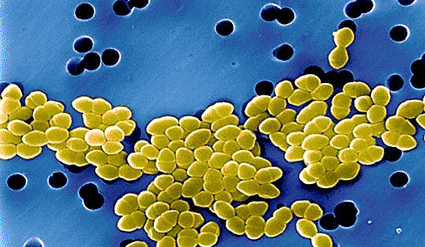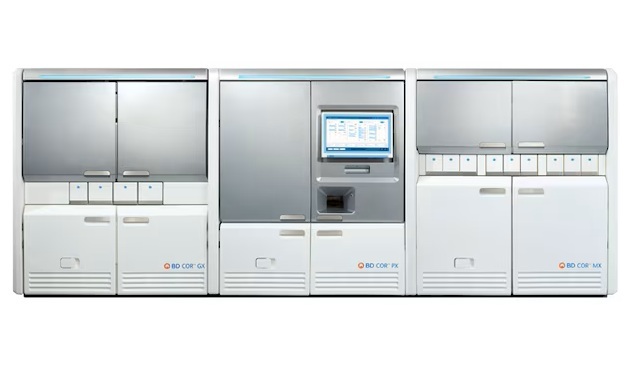Molecular Sequencing of Gut Bacteria Identify Septicemia Risk
By LabMedica International staff writers
Posted on 13 Dec 2010
DNA sequencing of bacteria in the gut could identify patients at high-risk of life-threatening bloodstream infection with the antibiotic-resistant bacterium. Posted on 13 Dec 2010
Vancomycin-resistant Enterococcus (VRE) domination of intestinal microbiota is enabled by antibiotic treatment and precedes bloodstream invasion in humans undergoing allogeneic hematopoietic stem cell transplantation (allo-HSCT).

Image: Colored scanning electron micrograph (SEM) of Vancomycin-resistant Enterococci (VRE) (photo courtesy Science Source).
In a study carried out at Memorial Sloan-Kettering Cancer Center, (New York, NY, USA), stool samples were collected from patients undergoing allo-HSCT upon hospital admission and periodically during the transplant course. In the study, high-throughput DNA sequencing of bacteria in the gut excreted into the feces, confirmed previous studies that antibiotic treatment dramatically disturbs the pattern of bacteria present. Of immense potential clinical value was the observation that subsequent colonization of the gut predominantly with Enterococcus bacteria preceded bloodstream invasion with VRE.
The 16s rDNA sequencing approaches provide an unbiased view of the intestinal microbiota and demonstrate the remarkable shifts and losses of microbial diversity associated with antibiotic therapy and colonization with antibiotic-resistant microbes. Treatment with vancomycin, an antibiotic that selectively targets Gram-positive bacteria, essentially eliminated the Gram-negative phylum Bacteroidetes from the cecum. Discontinuation of all three antibiotic regimens also resulted in a loss of Lactobacillaceae. Other bacterial genera and families, such as Clostridium, Enterococcus, and Enterobacteriaceae, increased in frequency following recovery from antibiotic therapy.
Colby Zaph, PhD a professor at University of British Columbia, (Vancouver, Canada) commenting on the study, suggested monitoring fecal bacteria content could identify patients at high risk of bloodstream infection with VRE and provide a window for therapeutic intervention. The study was published on December 1, 2010, in the Journal of Clinical Investigation.
Related Links:
Memorial Sloan-Kettering Cancer Center
University of British Columbia














